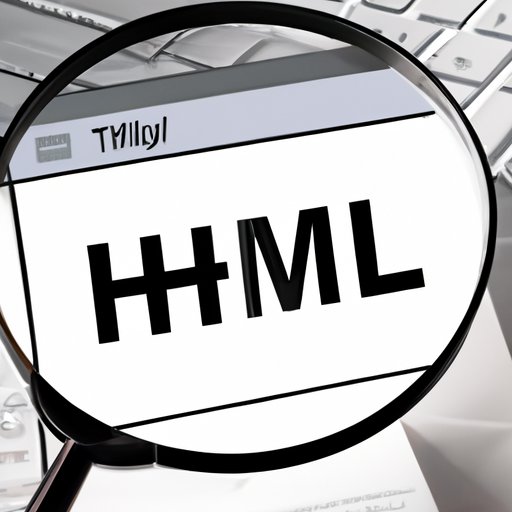How to Add an Image on HTML: A Comprehensive Guide
HTML is a powerful tool for building websites, and one of its most important features is the ability to add images. Images are an essential component of any website, and they can help to convey information, set the tone of a page, and create visual interest. In this article, we’ll take a step-by-step approach to show you how to add an image to an HTML page, as well as give you some quick tips, troubleshooting advice, and other helpful resources.
Step-by-Step Guide
Before we get started, let’s talk a little bit about HTML and its syntax. HTML stands for Hypertext Markup Language, and it’s the primary markup language used to create websites. HTML is made up of elements, which are marked up by tags. These tags tell the browser how to display the content of the page.
When it comes to adding images to HTML, the most important tag to use is the “img” tag. This tag is used to specify an image and its location on the web page. Here are some of the different attributes that can be used with the “img” tag:
- src: This specifies the path to the image file
- alt: This provides alternative text to be used when the image cannot be displayed
- width: This specifies the width of the image in pixels or as a percentage of the screen width
- height: This specifies the height of the image in pixels or as a percentage of the screen height
- title: This provides a title for the image, which can be displayed when the user hovers over the image
Now, let’s take a look at how to add an image to an HTML page step-by-step:
- First, you’ll need to find the image you want to add to your HTML page. The image should be saved in a format that is compatible with HTML, such as JPEG, PNG, or GIF.
- Next, you’ll need to upload the image to your web server. This is usually done using an FTP client, such as FileZilla.
- Once the image is uploaded to the server, you can use the “img” tag to add the image to your HTML page. Here’s an example of what the tag might look like:
“`html

“`
In this example, “example.jpg” is the name of the image file, and “Example image” is the alt text to be displayed if the image cannot be loaded. The image file must be saved in a folder called “images” on your web server in order for this code to work.
You can also specify the width and height of the image using the “width” and “height” attributes, like this:
“`html

“`
In this example, the image will be displayed at a width of 500 pixels and a height of 300 pixels.
Video Tutorial
If you prefer a visual demonstration of how to add an image to an HTML page, check out this helpful video tutorial:
Video tutorials can be especially helpful for visual learners who prefer to see a process demonstrated step-by-step.
Quick Tips
If you’re already familiar with HTML and just need a quick refresher on how to add an image to a page, here are the key steps involved:
- Upload your image to your web server using an FTP client
- Add an “img” tag to your HTML code
- Specify the path to the image file using the “src” attribute
- Provide alternative text in case the image cannot be loaded using the “alt” attribute
- Optionally specify the width and height of the image using the “width” and “height” attributes
When you’re adding images to your HTML page, keep these tips in mind:
- Use descriptive, meaningful alt text to make your images accessible to users who are visually impaired
- Optimize your image file size for faster load times
- Use appropriate image formats for different types of images (JPEG for photographs, PNG for graphics, etc.)
- Align your images with the surrounding text for a more professional look
Troubleshooting Guide
If you’re having trouble adding an image to your HTML page, here are some common issues you may encounter:
- Incorrect file format: Make sure your image is saved in a format that is compatible with HTML
- Incorrect file path: Check to make sure you’ve specified the correct path to the image file
- Broken image link: If the image isn’t displaying on your page, try opening the image URL directly in your browser to see if it’s a server issue
- Image not optimized: Large image files can slow down your page and reduce user engagement. Use an image compression tool to optimize your images
By identifying these issues and taking action to correct them, you’ll be on your way to successfully adding images to your HTML pages.
Tools and Resources
If you want to take your image optimization skills to the next level, check out these useful tools and resources:
- TinyPNG: This tool compresses PNG and JPEG images to create smaller file sizes
- Pexels: This website provides free stock photos that can be used on your website
- Canva: This website lets you create and edit graphics and images to use on your website
Conclusion
Adding images to HTML pages can seem intimidating if you’re not familiar with HTML code, but with the right tools and resources, it’s a skill that anyone can learn. By following the step-by-step guide, tips, and troubleshooting advice outlined in this article, you’ll be able to add images to your HTML pages with confidence. Remember to optimize your image files, use appropriate alt text, and align your images with the surrounding content for the best user experience.
